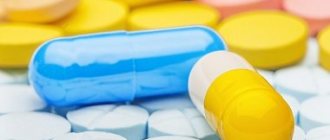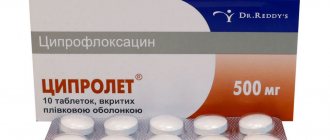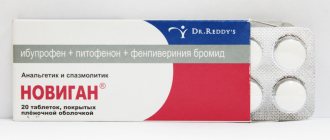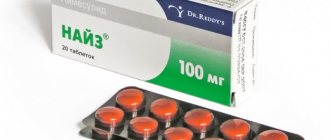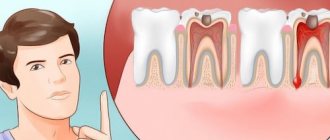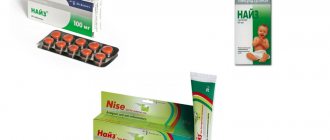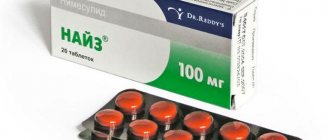Indications and contraindications for Nise therapy
The instructions for the drug indicate that the medication helps with acute attacks of pain and primary dysmenorrhea. Nise is prescribed as a medicine for secondary therapy; the risk of adverse reactions is preliminarily assessed for each patient. The list of diseases for which the medication is effective is presented:
- rheumatoid, psoriatic arthritis;
- articular syndrome that occurs during an exacerbation of gout;
- ankylosing spondylitis;
- osteochondrosis, osteoarthrosis;
- muscle pain;
- pain syndrome that occurs after injuries, surgical interventions, etc.
The drug is contraindicated:
- in case of individual intolerance to nimesulide or other ingredients of their component composition;
- the appearance of nettle fever, allergy symptoms due to previous use of Aspirin or other NSAIDs;
- treatment with other drugs with toxic effects on the liver;
- alcohol or drug addiction;
- bleeding from the gastrointestinal tract, damage to the gastric mucosa when taking NSAIDs;
- problems with the rate of blood clotting;
- dysfunction of the kidneys, heart, liver;
- clinical signs of influenza, ARVI.
The medicine is not used during lactation and in the last trimester of gestation. The drug is contraindicated in patients under twelve years of age and is not used when planning pregnancy due to its effect on fertility.
Pharmacological properties of the drug Nise
Nimesulide is an active substance that has anti-inflammatory, analgesic and antipyretic properties. Nimesulide selectively inhibits COX-2 and inhibits the synthesis of prostaglandins at the site of inflammation. Nimesulide inhibits the release of the enzyme myeloperoxidase, and also inhibits the formation of free oxygen radicals, without affecting the processes of phagocytosis and chemotaxis, and inhibits the formation of tumor necrosis factor and other inflammatory mediators. After oral administration, nimesulide is quickly absorbed into the gastrointestinal tract. The maximum concentration in the blood plasma is determined after 2–3 hours. The binding of nimesulide to plasma proteins reaches 97.5%. The drug is metabolized in the liver, the main product of metabolism is hydroxynimesulide, a pharmacologically active substance. About 65% of the administered dose of nimesulide is excreted in the urine, the remaining 35% in feces.
Dosages and application options according to the instructions for Nise
A reduction in unwanted reactions of the body during therapy is ensured by the maximum permissible doses and a short course of treatment. Therapeutic procedures do not exceed 15 consecutive days.
The treatment regimen depends on the age of the patient and the current pathological process:
- adults – 0.1 g twice a day after meals;
- elderly - similar to adults, without changes in dosage;
- children 12-18 years old - 100 mg twice a day.
The abstract draws attention to some features:
- mandatory reduction of Nise dosage for patients with impaired renal function;
- possible deterioration of visual acuity when taking NVPS, fluid retention in tissues;
- prohibition on joint use with analogues from the same pharmacological group.
During treatment, regular monitoring of the gastrointestinal tract is required. Due to the high risk of developing drowsiness and inhibition of reactions, during Nise therapy you should avoid driving vehicles, working with complex moving mechanisms, and activities that require precise coordination of movements and speed of reaction.
Nise gel (1% 50g)
INSTRUCTIONS for use of the medicinal product for medical use NIZE®
Registration number: P N012824/02
Trade name: Nise®
International nonproprietary name: nimesulide
Chemical name: N-(4-nitro-2-phenoxyphenyl) methanesulfonanilide
Dosage form: gel for external use
Composition: 1 g of gel contains: active substance: nimesulide 10 mg; excipients: N-methyl-2-pyrrolidone 250 mg, propylene glycol 100 mg, macrogol 315.5 mg, isopropanol 100 mg, purified water 200 mg, carbomer-940 20 mg, butylated hydroxyanisole 0.2 mg, thiomersal 0.1 mg, potassium dihydrogen phosphate 0.2 mg, flavor (Narcissus-938) 4 mg.
Description: transparent gel of light yellow or yellow color, free from foreign particles.
Pharmacotherapeutic group: non-steroidal anti-inflammatory drug (NSAID)
ATX code: M01AX17
Pharmacological action Nise® gel is a new generation non-steroidal anti-inflammatory drug (NSAID) from the sulfonamide class. It has a local analgesic and anti-inflammatory effect. Nimesulide is a selective competitive reversible inhibitor of cyclooxygenase type II (endoperoxide-prostaglandin-H2 synthetase). Reduces the concentration of short-lived prostaglandin H2, a substrate for kinin-stimulated synthesis of prostaglandin E2, at the site of inflammation and in the ascending pathways of pain impulses in the spinal cord. A decrease in the concentration of prostaglandin E2 (a mediator of inflammation and pain) reduces the activation of EP type prostanoid receptors, which is manifested by analgesic and anti-inflammatory effects. When applied topically, it causes a weakening or disappearance of pain at the site of application of the gel, including pain in the joints at rest and during movement, reduces morning stiffness and swelling of the joints. Helps increase range of motion.
Pharmacokinetics When applying the gel, the concentration of the active substance in the systemic circulation is extremely low. The maximum concentration after a single application is observed at the end of the first day; its value is more than 300 times lower than that for oral dosage forms of nimesulide. No traces of the main metabolite of nimesulide, 4-hydroxynimesulide, are found in the blood.
Indications Local symptomatic treatment of inflammatory and degenerative diseases of the musculoskeletal system (articular syndrome with exacerbation of gout, rheumatoid arthritis, psoriatic arthritis, ankylosing spondylitis, osteoarthritis, osteochondrosis with radicular syndrome, radiculitis, inflammatory damage to ligaments, tendons, bursitis, sciatica, lumbago). Muscle pain of rheumatic and non-rheumatic origin. Post-traumatic inflammation of soft tissues and the musculoskeletal system (damage and rupture of ligaments, bruises).
Contraindications Hypersensitivity to nimesulide and the components of the drug; erosive and ulcerative lesions of the gastrointestinal tract in the acute stage, bleeding from the gastrointestinal tract, dermatoses, damage to the epidermis and skin infections in the area of application; severe renal (creatinine clearance less than 30 ml/min.) or liver failure, a history of bronchospasm associated with the use of acetylsalicylic acid or other NSAIDs, pregnancy and lactation, children under 7 years of age.
With caution : Liver failure; renal failure; severe heart failure; arterial hypertension; diabetes mellitus type 2; elderly and children's age.
Directions for use and dosage : Externally. Before applying the gel, wash and dry the skin surface. Apply a uniform thin layer of gel approximately 3 cm long to the area of maximum pain, without rubbing, 3-4 times a day. The amount of gel and the frequency of its use (no more than 4 times a day) may vary depending on the size of the treated area and the patient’s response. Do not use the gel for more than 10 days without consulting a doctor.
Side effects Local reactions: itching, urticaria, peeling, transient change in skin color (not requiring discontinuation of the drug). If any adverse reactions occur, you should stop using the drug and consult your doctor. When applying the gel to large areas of the skin or with prolonged use, the development of systemic adverse reactions is possible: heartburn, nausea, vomiting, diarrhea, gastralgia, ulceration of the gastrointestinal mucosa, increased activity of “liver” transaminases; headache, dizziness; fluid retention, hematuria; allergic reactions (anaphylactic shock, skin rash); thrombocytopenia, leukopenia, anemia, agranulocytosis, prolongation of bleeding time.
Overdose Cases of drug overdose have not been described. However, when large quantities of gel (exceeding 50 g) are applied to large areas of skin, the development of an overdose cannot be ruled out. There is no specific antidote. You need to see a doctor.
Interaction with other drugs Pharmacokinetic interaction with drugs that compete for association with blood plasma proteins is not excluded. Caution should be exercised when using Nise® simultaneously with digoxin, phenytoin, lithium preparations, diuretics, cyclosporine, methotrexate, other NSAIDs, antihypertensive and antidiabetic agents. Before using the gel, you should consult your doctor if you are using these products or are under medical supervision.
Special instructions The drug is recommended to be applied only to intact areas of the skin, avoiding contact with open wounds. Avoid getting the gel into the eyes and other mucous membranes. Do not use the gel under airtight dressings. After applying the gel, wash your hands with soap. Close the tube tightly after using the gel.
Release form Gel for external use 1%. 20 g or 50 g in a laminated aluminum tube equipped with a membrane to control the first opening. The tube is packed in a cardboard box with instructions for use.
Shelf life: 2 years. Do not use the drug after the expiration date indicated on the package.
Storage conditions List B. In a dry place, protected from light, at a temperature not exceeding 25 °C. Do not freeze. Keep out of the reach of children!
Conditions for dispensing from pharmacies Without a prescription.
Manufacturer Dr. Reddy's Laboratories Ltd., Hyderabad, Andhra Pradesh, India
Manufacturing address Dr. Reddy's Laboratories Ltd. Plot No. 41, Nasigere Village, Kasaba Hobli, KIADB, Malur-563130, Karnataka, India.
Send consumer complaints to the following address: Representative office: 115035, Moscow, Ovchinnikovskaya embankment, 20, building 1 tel., 783-29-01 fax
Adverse reactions and overdose
Clinical studies have shown that use of the drug in high dosages may increase the risk of developing diseases caused by arterial thrombosis. During therapeutic manipulations, patients experienced swelling, increased blood pressure, and heart failure.
Common adverse reactions to Nise include:
- bleeding from the gastrointestinal tract;
- peptic ulcers, gastric perforation;
- attacks of vomiting with nausea;
- active gas formation, diarrhea;
- dyspeptic disorders;
- pain in the abdominal area;
- tarry stools, ulcerative stomatitis.
The development of gastritis was observed less frequently in patients.
Accidentally exceeding the prescribed amount of Nise can cause drowsiness, apathy, discomfort in the epigastric region, vomiting with nausea. These phenomena are reversible and can be treated with symptomatic treatment.
Sometimes there is an increase in blood pressure, respiratory depression, bleeding from the gastrointestinal tract, and coma. An overdose of NSAIDs threatens the development of allergic reactions, including angioedema and anaphylaxis.
The pathological condition is treated with maintenance therapy using activated carbon (1 tablet per 10 kg of body weight) or an osmotic laxative. At the same time, renal and hepatic functionality is monitored.
Side effects of the drug Nise
When using the drug, the following side effects may occur, mainly during the 1st week from the start of treatment: on the skin: most often - rash, itching, increased sweating, erythema, dermatitis; in some cases - angioedema, facial edema, erythema multiforme, urticaria, Stevens-Johnson syndrome and toxic epidermal necrolysis; from the gastrointestinal tract: nausea, gastritis, abdominal pain, diarrhea, constipation, flatulence; in some cases - stomatitis, melena, peptic ulcer of the stomach or duodenum, perforation of the ulcer or gastrointestinal bleeding; from the liver: jaundice, cholestasis, increased levels of liver transaminases, sometimes cases of acute hepatitis are possible, even with a fatal outcome; from the central nervous system: drowsiness, headache, dizziness, encephalopathy (Reye's syndrome); mental disorders: anxiety, nervousness, nightmares; from the kidneys: edema, dysuria, hematuria, urinary retention, isolated cases of oliguria, interstitial nephritis and renal failure; from the blood system: anemia, eosinophilia, isolated cases of pancytopenia, purpura and thrombocytopenia; from the immune system: hypersensitivity reactions, anaphylaxis; from the respiratory system: dyspnea, in some cases - asthma, bronchospasm, especially in patients with hypersensitivity to acetylsalicylic acid and other NSAIDs; from the cardiovascular system: tachycardia, hypertension (arterial hypertension), rarely - bleeding, hot flashes, blood pressure fluctuations. Also, while taking the drug, blurred vision, asthenia, hypothermia, and hyperkalemia are possible.

